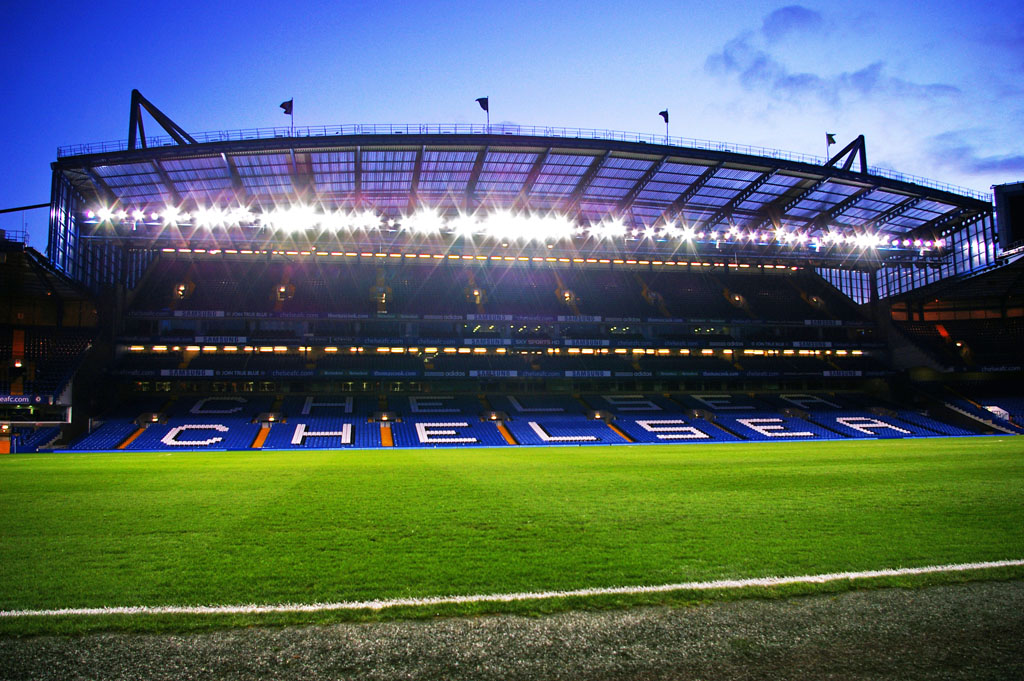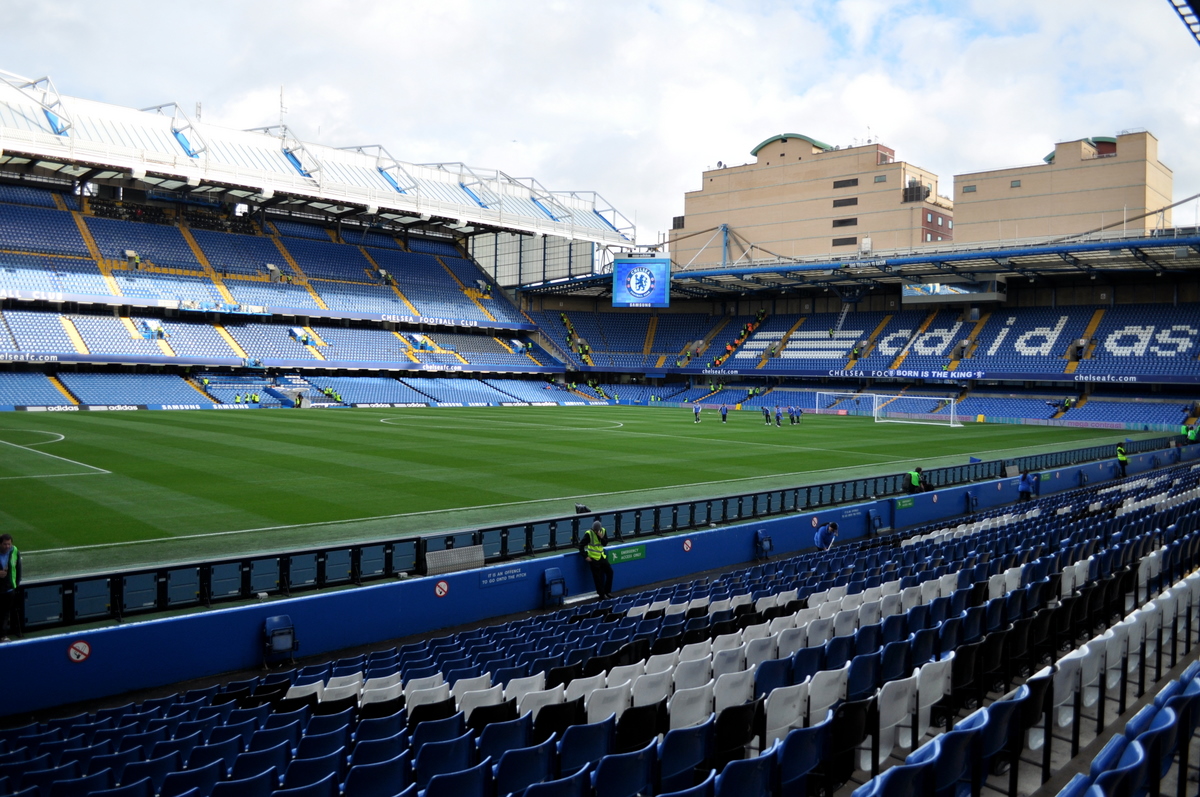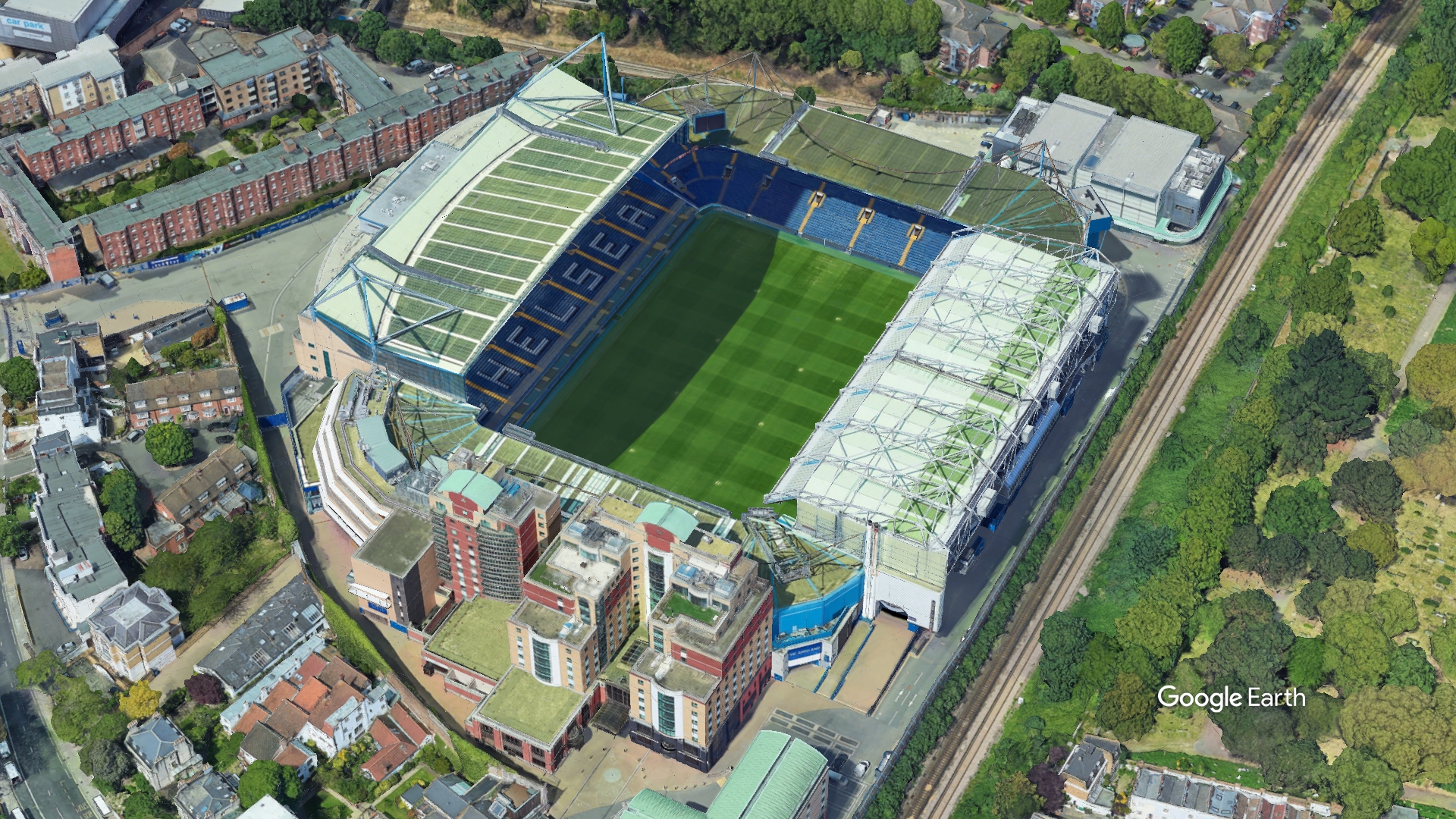Inside Chelsea’s £1.6 Billion Stadium Revolution
In the heart of London, a storm is brewing—one that could redefine the very soul of Chelsea Football Club. For over a century, Stamford Bridge has stood as a monument to football history, its echoing roars and blue flags symbolizing tradition and triumph.
But as modern football evolves into an empire of colossal arenas and billion-pound revenues, Chelsea finds itself at a crossroads. The question that now haunts the club, its owners, and its fans alike is simple—what is the future of Stamford Bridge?
This is the story of ambition colliding with heritage, of one of football’s greatest clubs preparing to make a decision that could change everything. Today, we dive deep into Chelsea’s £1.6 billion stadium dilemma—the plans, the power struggles, and the vision that could shape the next century of the Blues.
 Source: Vespa125125CFC at English Wikipedia
Source: Vespa125125CFC at English Wikipedia
The Legacy of Stamford Bridge
Stamford Bridge has been Chelsea’s home since the club’s birth in 1905. But the ground’s roots stretch even deeper—it was built in 1877 as an athletics venue before businessman Gus Mears transformed it into the fortress of Chelsea Football Club. For decades, the Bridge was one of England’s great arenas, hosting legendary battles that defined football’s golden eras.
Until recently, Stamford Bridge was the seventh-largest stadium in the Premier League. However, time has not been kind. As clubs like Tottenham and West Ham unveiled modern, state-of-the-art venues, Chelsea’s 40,341-seat stadium started to feel trapped in another era.
By the 2020s, the Bridge had slipped to around 11th in Premier League capacity rankings—a symbolic decline, but also a financial one.
The Financial Pressure Mounts
In football’s new economy, size equals strength. Matchday income, hospitality revenue, and commercial opportunities are now as vital as what happens on the pitch. And this is where Chelsea’s historic home becomes a heavy chain.
Compared to other members of the Premier League’s “Big Six,” Chelsea’s matchday revenue lags by £30 to £60 million per season. The limited capacity means fewer tickets, fewer premium boxes, and fewer corporate events. In an age when stadiums double as entertainment hubs, Stamford Bridge simply can’t compete.
For Chelsea’s owners, this is more than a matter of pride—it’s survival. To remain among football’s elite, the club must find a way to modernize its home or build a new one entirely from scratch. But the path forward is far from simple.
Failed Dreams and Frozen Projects
Over the past two decades, Chelsea has explored nearly every possibility to escape this constraint. In 2007, the club attempted to buy land near London’s Waterloo Station, only for the plan to collapse. In 2012, they tried again—this time bidding for the iconic Battersea Power Station. It would have been a breathtaking new home, but local opposition and logistical hurdles shut the project down.
Then came 2017—the closest Chelsea has ever come to breaking ground on a new era. The club secured planning permission to transform Stamford Bridge into a 60,000-seat architectural masterpiece. The design won awards, politicians praised it, and fans began to dream. But just as the project was ready to take flight, it was frozen. Roman Abramovich, then the club’s owner, faced visa complications, and with political tensions rising, the finances dried up. The dream was shelved indefinitely, and the Bridge remained frozen in time.
 Source: Jason Bagley from Cape Town, South Africa
Source: Jason Bagley from Cape Town, South Africa
The Hidden Power of the Chelsea Pitch Owners
What makes this challenge uniquely difficult is that Chelsea doesn’t fully own its own home. The Stamford Bridge freehold—the ground beneath the pitch itself—is controlled by a fan-led trust known as the Chelsea Pitch Owners, or CPO.
Created to protect the club’s heritage after past financial troubles, the CPO holds one extraordinary power: the legal right to veto any relocation of the club. In 2011, Abramovich tried to buy the pitch outright, but failed to reach the 75% approval required. That means every Chelsea owner since has had to work in partnership with the CPO—a group determined to keep the club tied to its sacred home.
This arrangement ensures loyalty to tradition, but it also complicates every major development plan. Moving Chelsea even a mile away would require the trust’s blessing—a challenge that has stopped billionaires in their tracks.
Two Roads Ahead
Now, under the leadership of Todd Boehly and Clearlake Capital, Chelsea faces a defining choice. Two main options lie on the table: rebuild Stamford Bridge from the ground up or construct an entirely new stadium in West London.
The first path—rebuilding Stamford Bridge—gained momentum in late 2023, when Chelsea purchased roughly 1.2 acres of land adjacent to the stadium for around £80 million. The site, known as the Sir Oswald Stoll Mansions, provides just enough extra room to make a full redevelopment possible.
The proposed plan involves demolishing the existing ground and constructing a new 55,000-seat modern arena on the same site. The estimated cost? Around £1.6 billion. But this approach comes with enormous challenges.
Chelsea would likely have to vacate Stamford Bridge for several years, possibly relocating to Wembley or another London stadium—just as Tottenham did during their own rebuild. Construction would disrupt the neighborhood, and logistical constraints around the site make the engineering task monumental. Still, rebuilding on the original ground would preserve the club’s spiritual home, satisfying the CPO and maintaining that vital emotional link between past and present.
The second path is more radical—building an entirely new stadium from scratch. The proposed location: Earl’s Court, a historic exhibition area just a mile away. It’s currently being redeveloped into a vast residential and commercial hub. The site’s scale offers room for a futuristic 60,000 to 65,000-seat venue—potentially at a cost between £1.2 and £1.5 billion.
However, there’s a catch. The current Earl’s Court masterplan includes no football stadium. In fact, as recently as September 2024, developers stated publicly that no such plans existed. But by early 2025, the winds began to shift.
Politics, Power, and Possibility
The Hammersmith and Fulham Council signaled that they would consider supporting a new Chelsea stadium if it aligned with broader regeneration goals. Officials hinted that a stadium could serve as an economic anchor for the area—bringing jobs, infrastructure, and investment.
Yet, the road remains uncertain. Land acquisition would be costly, the planning process long and politically delicate, and the Chelsea Pitch Owners’ approval still essential. Even if all parties agreed, it could take over a decade before a new stadium opened its gates.
This uncertainty has divided Chelsea’s leadership. Reports suggest that Clearlake Capital’s Behdad Eghbali leans toward rebuilding Stamford Bridge—seeing it as a balanced mix of tradition and business. Todd Boehly, however, is said to be more open to starting fresh in Earl’s Court, envisioning a modern entertainment complex with corporate boxes, hospitality hubs, and lucrative naming rights—an American-style sports destination that could generate long-term revenue.
Both men share one understanding: whatever decision they make, it will define Chelsea’s future for generations.
Boehly has already called the stadium issue a “decade-long project.” He acknowledges both the blessing and the curse of Chelsea’s prime location. “You’re in the middle of London,” he once said, “and that’s the good news—but also the bad news.”
Any rebuild or relocation could take until the late 2030s before completion. That timeline gives Chelsea the chance to carefully plan, secure permissions, and avoid the financial pitfalls that doomed previous attempts.
Throughout 2025, meetings intensified between Chelsea executives, the Mayor of London, and local councils. Architects and consultants were brought in to compare both options. The CPO continued to play a decisive role—without their approval, the club legally cannot move the “Chelsea FC” name to any new site. Collaboration is not optional—it’s essential.
For fans, this decision strikes at the heart of identity. Stamford Bridge isn’t just a stadium—it’s a living monument to Chelsea’s rise from a local London club to global powerhouse. To leave it behind would be unthinkable for many. Yet others argue that progress demands evolution, that to compete with clubs like Manchester City and Tottenham, Chelsea must think bigger.
Rebuilding the Bridge honors history but comes with logistical nightmares. Building a new home offers freedom, innovation, and scale—but risks alienating loyal supporters who see the Bridge as sacred.
This isn’t just a construction project—it’s a battle between heritage and ambition, between the memories that built the club and the future that could sustain it.
As of 2025, no final decision has been made. Both paths remain open, and both require immense courage. The one certainty is that the status quo cannot continue. Stamford Bridge, as iconic as it is, no longer meets the demands of modern football.
Chelsea’s leadership stands before a choice that could define their legacy. Do they rebuild the fortress that made them, or do they rise a new with a stadium that redefines what it means to be a football club in the 21st century?
Whatever the choice, the outcome will echo far beyond West London—it will shape the identity of Chelsea Football Club for the next hundred years.
The old Bridge may soon fall silent, its concrete walls giving way to steel, glass, and vision. But one truth will remain: Chelsea’s blue heart beats stronger than ever. Whether the club stays rooted in its historic home or builds a billion-pound cathedral of the future, this decision will mark the dawn of a new era.
Because in football, as in life, greatness demands evolution. And as the lights of London shine down on Stamford Bridge one last time, one question remains—when the future finally arrives, where will Chelsea call home?
image sources
- Stamford_Bridge_-_West_Stand: Vespa125125CFC at English Wikipedia
- Inside_Stamford_Bridge: Jason Bagley from Cape Town, South Africa




